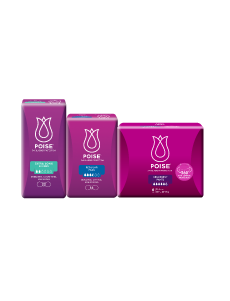How to Identify Pregnancy Incontinence?
If you’re carrying, or have recently had a child, there’s a chance you may experience pregnancy related incontinence. The weight of a baby and the stress of labour both contribute to weak pelvic floor muscles. Many women experience symptoms such as:
- Leaking urine when coughing, sneezing, lifting, laughing or exercising
- Inability to control passing wind
- An urgent need to empty the bladder or bowel
- A leaky bowel motion after going to the toilet
- Difficulty passing motion
- The feeling of a lump or dragging sensation in the vagina (this may indicate a prolapse)
Urine or amniotic fluid?
It may be difficult to tell the difference between stress incontinence and leakage of amniotic fluid (your ’waters’) during your last few weeks of pregnancy.
When your waters break, amniotic fluids leak from your vagina — it may be a gush or just a trickle. Even though you’re probably moving slowly and carefully, amniotic fluid usually leaks out when you stand after lying or sitting for a long time and you're unable to control it. Amniotic fluid is usually odourless and colourless (although it may contain specks of mucus or blood).
Urine, however, tends to leak when you cough, laugh, sneeze or move suddenly, even if you’re lying down. It can be clear, or straw-yellow but usually has a distinctive odour.
If you think you’re leaking amniotic fluid, or your fluid has meconium (first faeces of a newborn) in it, which is generally dark green, contact your midwife, doctor or labour ward immediately.
How can I manage incontinence?
Incontinence can affect women of all pages. POISE® has a wide product offering of Liners and Pads that are all specially designed to help light bladder leakage protection and pregnancy incontinence care. It is 2X more absorbent than period products, but all in a discreet manner and by keeping you comfortable. Try now!
To learn more about the products available, and find the right product for you, visit our POISE® products page.
Where To Buy
These articles might also be interesting to you
Kimberly-Clark Singapore makes no warranties or representations regarding the completeness or accuracy of the information. This information should be used only as a guide and should not be relied upon as a substitute for professional medical or other health professional advice.
Sources
Arnold, J., McLeod, N., Thani-Gasalam, R. and Rachid, P. (2012). RACGP - Overactive bladder syndrome –management and treatment options. [online] Racgp.org.au. Available at:
http://www.racgp.org.au/afp/2012/november/overactive-bladder-syndrome/
[Accessed 6 Apr. 2015].
Bladderclinic.com.au, (2011). Overactive Bladder (OAB). [online] Available at:
http://www.bladderclinic.com.au/bladder/overactive-bladder-oab [Accessed 6 Apr. 2015].
Cherney, K. (2013). Home Remedies for Overactive Bladder. [online] Healthline. Available at:
http://www.healthline.com/health/overactive-bladder/home-remedies#Overview1
[Accessed 6 Apr. 2015].
Eilber, MD, K. (2015). What Is The Difference Between A Small Bladder And An .... [online] EmpowHER. Available at:
http://www.empowher.com/overactive-bladder/content/what-difference-between-small-bladder-and-overactive-bladder-dr-
[Accessed 6 Apr. 2015]
Maher, MD, C. (2003). Welcome to Chris Maher's Urogynaecology Australia Web Site. [online] Urogynaecology.com.au. Available at:
http://www.urogynaecology.com.au/Overactive.htm [Accessed 6 Apr. 2015].
Siamak N. Nabili, M. (2014). Overactive Bladder: Facts for Men, Women, and Children. [online] MedicineNet. Available at:
http://www.medicinenet.com/overactive_bladder/article.htm [Accessed 6 Apr. 2015].
Tidy, MD, C. (2013). Overactive Bladder Syndrome, Bladder Problems | Health | Patient.co.uk. [online] Patient.co.uk. Available at:
http://www.patient.co.uk/health/overactive-bladder-syndrome [Accessed 6 Apr. 2015].
Webmd.com, (2014). Overactive Bladder in Children (Child Incontinence): Signs, Causes, and Treatment. [online] Available at:
http://www.WebMD.com/urinary-incontinence-oab/overactive-bladder-in-children
[Accessed 6 Apr. 2015].
Canceraustralia.gov.au, (2019). Bladder cancer statistics in Australia | Bladder Cancer. [online] Available at:
https://bladder-cancer.canceraustralia.gov.au/statistics
[Accessed 6 Jun. 2019].
Other urinary incontinence causes









